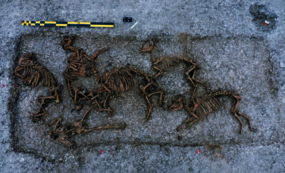Stable isotope study of bone and dental remains from Northern Gallic populations during the Second Iron Age: climate, diet, migrations
The Gauls occupied the Western Europe territory during the Second Iron Age (500 BCE - 50 BCE). Originating from the Celts, the Gauls gathered in tribes and interacted through trading and war. Due to the transmission of their knowledge through oral communication, there is a lack of direct testimony of their cultural legacy, while written reports by foreigners such as Greeks or Romans are abundant and contributed to the commonly accepted idea that the Gauls were boorish and barbaric. A new conception of this civilization has emerged through the discovery of numerous Gallic archaeological sites in Europe.
The Gauls experienced, during the Second Iron Age, major political changes and specific climate conditions. The Roman conquest and tribal wars among Gallic tribes, within the context of a climate optimum, have influenced the cultural practices of these populations. Two archaeological sites from Northern France have been studied: Thézy-Glimont and Ribemont- sur-Ancre. Each site bears specific issues about the origin and the social status of the buried individuals, which could not be resolved by archaeological and anthropological studies. These issues have been studied through radiocarbon dating, stable and radiogenic isotope analysis of bone and dental remains from the humans and animals buried in the archaeological sites. The work carried out highlights the environmental and societal context in which the Gauls have evolved and improves the understanding of the two considered archaeological sites.
Keywords: Gauls, Iron Age, stable isotopes, bone and dental remains, climate, diet, migrations, bioarchaeology.

